You are using an out of date browser. It may not display this or other websites correctly.
You should upgrade or use an alternative browser.
You should upgrade or use an alternative browser.
Photos from Featherston's Confederacy/ TL-191
- Thread starter Alternatehistoryguy47
- Start date
-
- Tags
- the rising sun
The Early life of Jacob Featherston, Pre-1921
*A lot of head-canon ideas. Feel free to agree or disagree with this fan-version of Featherston's early years.
For many decades after the death of Jacob Featherston on July 7th, 1944, not much was accurately known about him before his rise to power. Interviews done with major and minor members of the Confederate Freedom Party revealed contradictory narratives based on what they were told from either Featherston or other people. Few knew the exact date and location of his birth, rumors swirled about the identity of his family and, for a time, the only undisputed documentation that existed was Featherston’s service in the Confederate Army during the First Great War. In his autobiography/manifesto, Over Open Sights, Featherston gave some details about his life before the First Great War, but could not be corroborated by independent review. Beginning in the 1940’s through 1960’s, research into the documentation made by former Confederate States government officials was collected and evaluated. At the end of the 20th Century and the beginning of the 21st Century, de-classified information from the U.S. government was released to the public, giving SGW historians and ordinary people a more accurate, but not complete, report on the life, rise & fall, and death of the most evil man who has ever lived.
FEATHERSTON FAMILY
The earliest known ancestor of Jacob Featherston was a man named Henry Featherstone, who married Elizabeth Marshall. They had one son named Charles Featherston, born on December 6th, 1771 in the British colony of Virginia and died on November 25th, 1852 in Union Georgia.
Charles Featherston married Lucy Pitts and had nine children, the youngest was a veteran of the War of Secession and a Confederate Mississippi senator named Winfield Scott “Old Swet” Featherston, who was born on August 8th, 1820 in Murfreesboro, Tennessee and died on May 28th, 1891 in Holly Springs, Mississippi.
“Old Swet” Featherston had three siblings; all of which died before 1890. He also had a total of six children, four of which survived beyond their childhood years. The survivors were Winfield J. Featherston (1864-1899), Elise Featherston (1869-1934?), and Eloise Featherston (1878-1945).

Image of Confederate Senator Winfield Scott Featherston
Initially involved in the slavery business, Winfield J. Featherston’s time in it was short when the Confederacy began to manumit their slaves in 1882. Contrary to Jacob Featherston’s assertion that his father was just an overseer, records indicate that his immediate family was involved in the selling and buying of slaves. The loss of the slavery business forced the family, among many other political families at the time, to lose a grand fortune and fell into variable levels of poverty. It is not known why Jacob Featherston lied about his father’s occupation, until a letter written by one his aunts, Elise, revealed that she did not like the idea of him lying to the public to elicit sympathy for the loss of his father’s business. Elise Featherston was never seen again since her disappearance in the 1930’s and the letter was discovered among the ruins of Featherston’s presidential office.

Postcard from Richmond, Virginia, capital of the Confederacy, late 1800's-early 1900's
After manumission had occurred, 18-year-old Winfield J. Featherston moved to Virginia permanently and settled in Richmond for job opportunities. During his time in Richmond, he began a physical relationship with Clare Pole (1866-1898), the daughter of a shopkeeper for whom he worked for. The couple did not marry out of love, but it was done to please their families after Clare Pole became pregnant at a young age. Despite having an influential family member in the Confederate Congress, Winfield J. never sought financial assistance from his family. A few months before her death, Featherston’s second aunt, Eloise Featherston, was interviewed by U.S. officials and said there existed a familial dysfunctionality fueled by financial hardship, alcoholism, and criminality. Due to this, Winfield J. did not want to depend on his family in order to get by, eventually becoming disconnected from the rest of them.
EARLY YEARS
Childhood and education
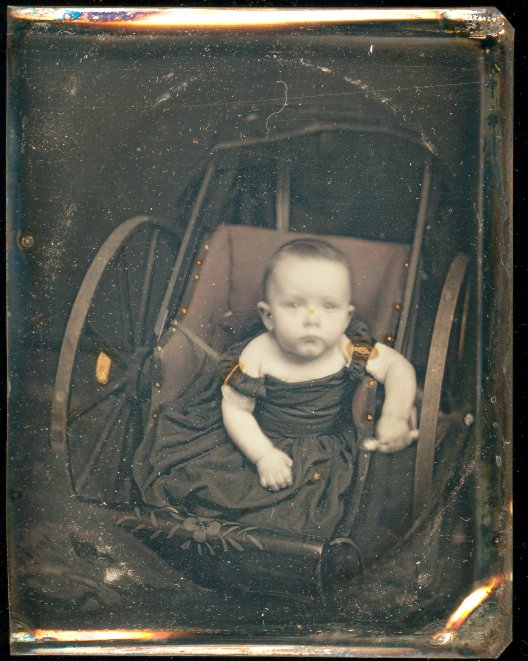
Earliest Known Image of Jacob Featherston as an infant, ca. 1886
The man who would be known as “Jake the Snake” was born with the full name of Jacob Winfield Scott Featherston. Featherston was the only child of Clare Pole and Winfield J. Featherston. His two middle names were given to him in honor of his grandfather. Winfield J. did have some admiration and respect for his father and believed that his name might help him find success in the Confederacy.
The date of Featherston’s birth was believed to be some time during the 1870’s based on personal entries written by Captain J.E.B. Stuart III, a direct descendant of General J.E.B. Stuart from the War of Secession. The captain described a conversation with then-Sergeant Featherston when he mentioned himself to be a young boy during the early 1880’s. However, a birth certificate was discovered that showed his date of birth to be Wednesday, March 3rd, 1886 in Richmond, Virginia. It is not exactly known why Featherston lied about his age, but Amos Mizell, a member of the Tin Hats until it was engulfed by the Confederate Freedom Party, claimed Featherston told him in a private conversation that he wanted to be perceived as an older gentleman for the 1921 Confederate Presidential Election. Historians found it unusual that he told Captain Stuart III a completely different story well before his interest in politics.
According to Featherston in Over Open Sights, his relationship with his parents was poor. His father’s lack of finding a stable job caused him to become bitter and angry. While he sometimes physically abused his son when drunk, Featherston noted that he didn’t care much about raising him. His mother, however, was no better. Jacob Featherston’s mother was unsympathetic and would emotionally and physically abuse his son from perceived and real disobedience from him. There was no apparent love between them. After his mother’s suicide in 1898, he would later remark that while he respected his father, he hated his mother. Featherston’s father would eventually die in a drunken fight near a bar sometime in 1899. These negative experiences with his parents deeply affected his inability to form permanent relationships with other people. He was sent to live with his Aunt Elise, who also lived near Richmond. In one of the few instances of his father giving him advice when he was alive, Featherston was told that in order to escape a perpetual life of poverty, he should join the Confederate Army and live off the government. At the time, Featherston said in his book that he rejected the idea and wanted to become a writer once he completed his required conscripted service.

Photograph of a young Gus Kubrick, the only friend Featherston ever had
Featherston attended school run by a Baptist community and was noted by his teachers to be a difficult child who was often disciplined for his angry outbursts and occasional disobedience. Even though he was a loner for most of his life, he was able to obtain at least one childhood friend by the name of Gus Kubrick. Kubrick was a Confederate-born citizen of Polish-Austrian-Romanian descent. In a book written by Kubrick after the Second Great War, Kubrick claimed that he and Featherston had common literary interests and would often hang out together during and after school. He described Featherston as being, in many ways, polar opposites. While he loved and did well in school and practiced his religious faith, Featherston hated being in school, did poorly and would often avoid praying. Kubrick hated history, while Featherston was enamored by it, especially Confederate history.
Adolescence

Photograph of a younger Featherston, ca. 1900
As Featherston and Kubrick grew older, Kubrick would mention that Featherston had a peculiar eccentricity that was uncommon. Featherston showed no romantic feelings toward anyone or anything. When the topic of girls came up during their young adolescent years, Featherston showed indifference toward them. Kubrick mentioned that young Featherston’s peers in school and outside of it would often bully him by accusing him of being a homosexual. However, he noted that Featherston never fought back or denied it. Regardless if it was true or not, Kubrick thought it was very unusual for Featherston to ignore his bullies’ words at such a young age. It is generally believed that Featherston did not have any type of sexual orientation; he was an asexual.
During the last years of high school, Featherston’s talent for writing stories was shown to his teachers. While most of the early stories he wrote have been lost to history, Featherston wrote mostly fantasy involving medieval settings in Britain and France. Kubrick often tried to help him by convincing him to submit his work to publishing companies.
Early adulthood in Mississippi and Tennessee

Rare Photograph of Jacob Featherston during a family reunion in Mississippi, 1911
During his required military service in 1904, Featherston continued to write many short stories and poetry. He was assigned in the Army of Northern Virginia and was trained to become an artilleryman in the 1st Richmond Howitzers, Battery C. His superiors noted that he was a good soldier who steadily improved in discipline. After his service ended in 1906, Featherston kept in contact with Kubrick and began submitting his manuscripts to magazines and other literary agencies, but his work was judged to be poorly written. Featherston’s lack of success as a writer and not being able to afford to go to university compelled him to find work in other parts of the Confederacy.

Cumberland Mountains, close to where Featherston worked as a miner
From 1907-1913, Featherston travelled between Tennessee and Mississippi. Unlike his father, he wanted to know his family and tried to maintain a close relationship. His aunt Eloise lived in Holly Springs, while most of his distant cousins lived in Eastern Tennessee. These six years of Featherston’s life are not well-documented to historians. What is known is that he first lived with his cousins and worked with them as coal miners in the Cumberland Mountains region; a job he hated because he regarded it as “nigger work”. Sometime on or after 1910, he visited his extended family in Mississippi. Based on Eloise Featherston’s interview with the U.S. government, she heard that Featherston stayed in Mississippi for less than three years when he discovered that his grandfather wrote his father (Winfield J.) and his family out of the family will. Despite being told that the Featherston family had little money, he realized that his grandfather had enough to support several of his grandchildren, including himself. Furious at being denied funding for his dreams of becoming a writer, Featherston returned to Richmond with his Aunt Elise, where he found work as a border guard between the states of Confederate Virginia and Maryland. U.S. government authorities after the war have not been able to find the alleged will. A lack of verification on the will is caused in part by the liquidation of the majority of Featherston’s family during his presidency.
FIRST GREAT WAR

Photograph of the First Richmond Howitzers with a French 75mm field gun (right). Sergeant Featherston is on the left
When the First Great War began in 1914, Featherston was assigned to his old artillery unit near the Potomac river. During this time, he met Major Clarence Potter and Captain J.E.B. Stuart III. He also began to know Black servants, such as Perseus, Nero, and Pompey, the latter of which grew up into servitude with Captain Stuart III. Featherston admitted that he had no murderous rage at the time against Blacks and even asked for their help to reload an artillery cannon. He mentioned a scene in Over Open Sights where he played card games with the servants attached to his military unit. Nevertheless, Featherston was a typical Confederate citizen of his time: Minimally racist, but willing to work alongside Blacks as long as boundaries were acknowledged.

Photograph of Communist Black Confederates rebelling in Richmond, 1915
Before the Red Rebellion of 1915, an investigation headed by Clarence Potter was done to weed out Black Communists from the Confederacy. When questioned by Potter as to the conduct of their Black workers, Featherston noted nothing out of the ordinary. Sometime later before the beginning of 1915, Featherston overheard a conversation between Pompey and Perseus, when the former approached the latter. In this conversation, Featherston heard words and phrases from Pompey that were related to Socialist ideas. Words such as “revolution”, “Black republic”, and “dialectical” made Featherston suspicious. He reported Pompey to Clarence Potter but Captain Stuart III refused to believe that his servant would be a Red. When Pompey was initially taken away for questioning, Stuart III asked his father to interfere and return him back. After the Red Rebellion began, Featherston was proven right about Pompey. Captain Stuart III would have been court-martialed, but he led a suicidal charge in Pennsylvania, an event that Featherston himself witnessed. During that same battle, he claimed to have shot retreating Black soldiers that were allowed to serve by President Semmes in a fit of rage due to his trench being overrun by Union soldiers.
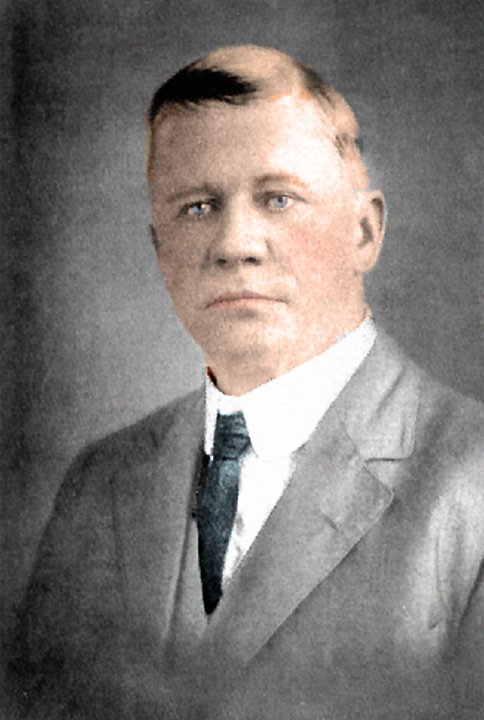
General J.E.B. Stuart, Jr. in civilian clothing, late 19th Century
After the war, he was informed by Major Clarence Potter that both would not be promoted and that their career in the military was over. While Potter accepted his fate, Featherston knew that it was a type of payback by Stuart III’s father, General Stuart, Jr., for his indirect role in his son’s death. The combined incidents of the Red Rebellion, the Confederate loss of the First Great War, and his prevention of being promoted in the Confederate army instilled in Featherston an uncontrollable rage and firm determination to recreate the Confederacy in his own image and destroy his enemies: The Whig-led Confederate Government, the United States, and the Black Confederates. At least one (if not two) of these enemies would survive Featherston thirty years later.

Featherston during the 1921 Confederate Presidential Election
Sources:
1) https://www.findagrave.com/memorial/111334974/charles-featherston
2) https://www.findagrave.com/memorial/49359815/james-ewell_brown-stuart
3) https://www.militaer-wissen.de/canon-de-75-modele-1897/?lang=fr
4) https://en.wikipedia.org/wiki/History_of_Richmond,_Virginia
5) Gus Kubrick is a Confederate version of August Kubizek
*A lot of head-canon ideas. Feel free to agree or disagree with this fan-version of Featherston's early years.
For many decades after the death of Jacob Featherston on July 7th, 1944, not much was accurately known about him before his rise to power. Interviews done with major and minor members of the Confederate Freedom Party revealed contradictory narratives based on what they were told from either Featherston or other people. Few knew the exact date and location of his birth, rumors swirled about the identity of his family and, for a time, the only undisputed documentation that existed was Featherston’s service in the Confederate Army during the First Great War. In his autobiography/manifesto, Over Open Sights, Featherston gave some details about his life before the First Great War, but could not be corroborated by independent review. Beginning in the 1940’s through 1960’s, research into the documentation made by former Confederate States government officials was collected and evaluated. At the end of the 20th Century and the beginning of the 21st Century, de-classified information from the U.S. government was released to the public, giving SGW historians and ordinary people a more accurate, but not complete, report on the life, rise & fall, and death of the most evil man who has ever lived.
FEATHERSTON FAMILY
The earliest known ancestor of Jacob Featherston was a man named Henry Featherstone, who married Elizabeth Marshall. They had one son named Charles Featherston, born on December 6th, 1771 in the British colony of Virginia and died on November 25th, 1852 in Union Georgia.
Charles Featherston married Lucy Pitts and had nine children, the youngest was a veteran of the War of Secession and a Confederate Mississippi senator named Winfield Scott “Old Swet” Featherston, who was born on August 8th, 1820 in Murfreesboro, Tennessee and died on May 28th, 1891 in Holly Springs, Mississippi.
“Old Swet” Featherston had three siblings; all of which died before 1890. He also had a total of six children, four of which survived beyond their childhood years. The survivors were Winfield J. Featherston (1864-1899), Elise Featherston (1869-1934?), and Eloise Featherston (1878-1945).
Image of Confederate Senator Winfield Scott Featherston
Initially involved in the slavery business, Winfield J. Featherston’s time in it was short when the Confederacy began to manumit their slaves in 1882. Contrary to Jacob Featherston’s assertion that his father was just an overseer, records indicate that his immediate family was involved in the selling and buying of slaves. The loss of the slavery business forced the family, among many other political families at the time, to lose a grand fortune and fell into variable levels of poverty. It is not known why Jacob Featherston lied about his father’s occupation, until a letter written by one his aunts, Elise, revealed that she did not like the idea of him lying to the public to elicit sympathy for the loss of his father’s business. Elise Featherston was never seen again since her disappearance in the 1930’s and the letter was discovered among the ruins of Featherston’s presidential office.

Postcard from Richmond, Virginia, capital of the Confederacy, late 1800's-early 1900's
After manumission had occurred, 18-year-old Winfield J. Featherston moved to Virginia permanently and settled in Richmond for job opportunities. During his time in Richmond, he began a physical relationship with Clare Pole (1866-1898), the daughter of a shopkeeper for whom he worked for. The couple did not marry out of love, but it was done to please their families after Clare Pole became pregnant at a young age. Despite having an influential family member in the Confederate Congress, Winfield J. never sought financial assistance from his family. A few months before her death, Featherston’s second aunt, Eloise Featherston, was interviewed by U.S. officials and said there existed a familial dysfunctionality fueled by financial hardship, alcoholism, and criminality. Due to this, Winfield J. did not want to depend on his family in order to get by, eventually becoming disconnected from the rest of them.
EARLY YEARS
Childhood and education

Earliest Known Image of Jacob Featherston as an infant, ca. 1886
The man who would be known as “Jake the Snake” was born with the full name of Jacob Winfield Scott Featherston. Featherston was the only child of Clare Pole and Winfield J. Featherston. His two middle names were given to him in honor of his grandfather. Winfield J. did have some admiration and respect for his father and believed that his name might help him find success in the Confederacy.
The date of Featherston’s birth was believed to be some time during the 1870’s based on personal entries written by Captain J.E.B. Stuart III, a direct descendant of General J.E.B. Stuart from the War of Secession. The captain described a conversation with then-Sergeant Featherston when he mentioned himself to be a young boy during the early 1880’s. However, a birth certificate was discovered that showed his date of birth to be Wednesday, March 3rd, 1886 in Richmond, Virginia. It is not exactly known why Featherston lied about his age, but Amos Mizell, a member of the Tin Hats until it was engulfed by the Confederate Freedom Party, claimed Featherston told him in a private conversation that he wanted to be perceived as an older gentleman for the 1921 Confederate Presidential Election. Historians found it unusual that he told Captain Stuart III a completely different story well before his interest in politics.
According to Featherston in Over Open Sights, his relationship with his parents was poor. His father’s lack of finding a stable job caused him to become bitter and angry. While he sometimes physically abused his son when drunk, Featherston noted that he didn’t care much about raising him. His mother, however, was no better. Jacob Featherston’s mother was unsympathetic and would emotionally and physically abuse his son from perceived and real disobedience from him. There was no apparent love between them. After his mother’s suicide in 1898, he would later remark that while he respected his father, he hated his mother. Featherston’s father would eventually die in a drunken fight near a bar sometime in 1899. These negative experiences with his parents deeply affected his inability to form permanent relationships with other people. He was sent to live with his Aunt Elise, who also lived near Richmond. In one of the few instances of his father giving him advice when he was alive, Featherston was told that in order to escape a perpetual life of poverty, he should join the Confederate Army and live off the government. At the time, Featherston said in his book that he rejected the idea and wanted to become a writer once he completed his required conscripted service.

Photograph of a young Gus Kubrick, the only friend Featherston ever had
Featherston attended school run by a Baptist community and was noted by his teachers to be a difficult child who was often disciplined for his angry outbursts and occasional disobedience. Even though he was a loner for most of his life, he was able to obtain at least one childhood friend by the name of Gus Kubrick. Kubrick was a Confederate-born citizen of Polish-Austrian-Romanian descent. In a book written by Kubrick after the Second Great War, Kubrick claimed that he and Featherston had common literary interests and would often hang out together during and after school. He described Featherston as being, in many ways, polar opposites. While he loved and did well in school and practiced his religious faith, Featherston hated being in school, did poorly and would often avoid praying. Kubrick hated history, while Featherston was enamored by it, especially Confederate history.
Adolescence
Photograph of a younger Featherston, ca. 1900
As Featherston and Kubrick grew older, Kubrick would mention that Featherston had a peculiar eccentricity that was uncommon. Featherston showed no romantic feelings toward anyone or anything. When the topic of girls came up during their young adolescent years, Featherston showed indifference toward them. Kubrick mentioned that young Featherston’s peers in school and outside of it would often bully him by accusing him of being a homosexual. However, he noted that Featherston never fought back or denied it. Regardless if it was true or not, Kubrick thought it was very unusual for Featherston to ignore his bullies’ words at such a young age. It is generally believed that Featherston did not have any type of sexual orientation; he was an asexual.
During the last years of high school, Featherston’s talent for writing stories was shown to his teachers. While most of the early stories he wrote have been lost to history, Featherston wrote mostly fantasy involving medieval settings in Britain and France. Kubrick often tried to help him by convincing him to submit his work to publishing companies.
Early adulthood in Mississippi and Tennessee
Rare Photograph of Jacob Featherston during a family reunion in Mississippi, 1911
During his required military service in 1904, Featherston continued to write many short stories and poetry. He was assigned in the Army of Northern Virginia and was trained to become an artilleryman in the 1st Richmond Howitzers, Battery C. His superiors noted that he was a good soldier who steadily improved in discipline. After his service ended in 1906, Featherston kept in contact with Kubrick and began submitting his manuscripts to magazines and other literary agencies, but his work was judged to be poorly written. Featherston’s lack of success as a writer and not being able to afford to go to university compelled him to find work in other parts of the Confederacy.

Cumberland Mountains, close to where Featherston worked as a miner
From 1907-1913, Featherston travelled between Tennessee and Mississippi. Unlike his father, he wanted to know his family and tried to maintain a close relationship. His aunt Eloise lived in Holly Springs, while most of his distant cousins lived in Eastern Tennessee. These six years of Featherston’s life are not well-documented to historians. What is known is that he first lived with his cousins and worked with them as coal miners in the Cumberland Mountains region; a job he hated because he regarded it as “nigger work”. Sometime on or after 1910, he visited his extended family in Mississippi. Based on Eloise Featherston’s interview with the U.S. government, she heard that Featherston stayed in Mississippi for less than three years when he discovered that his grandfather wrote his father (Winfield J.) and his family out of the family will. Despite being told that the Featherston family had little money, he realized that his grandfather had enough to support several of his grandchildren, including himself. Furious at being denied funding for his dreams of becoming a writer, Featherston returned to Richmond with his Aunt Elise, where he found work as a border guard between the states of Confederate Virginia and Maryland. U.S. government authorities after the war have not been able to find the alleged will. A lack of verification on the will is caused in part by the liquidation of the majority of Featherston’s family during his presidency.
FIRST GREAT WAR

Photograph of the First Richmond Howitzers with a French 75mm field gun (right). Sergeant Featherston is on the left
When the First Great War began in 1914, Featherston was assigned to his old artillery unit near the Potomac river. During this time, he met Major Clarence Potter and Captain J.E.B. Stuart III. He also began to know Black servants, such as Perseus, Nero, and Pompey, the latter of which grew up into servitude with Captain Stuart III. Featherston admitted that he had no murderous rage at the time against Blacks and even asked for their help to reload an artillery cannon. He mentioned a scene in Over Open Sights where he played card games with the servants attached to his military unit. Nevertheless, Featherston was a typical Confederate citizen of his time: Minimally racist, but willing to work alongside Blacks as long as boundaries were acknowledged.

Photograph of Communist Black Confederates rebelling in Richmond, 1915
Before the Red Rebellion of 1915, an investigation headed by Clarence Potter was done to weed out Black Communists from the Confederacy. When questioned by Potter as to the conduct of their Black workers, Featherston noted nothing out of the ordinary. Sometime later before the beginning of 1915, Featherston overheard a conversation between Pompey and Perseus, when the former approached the latter. In this conversation, Featherston heard words and phrases from Pompey that were related to Socialist ideas. Words such as “revolution”, “Black republic”, and “dialectical” made Featherston suspicious. He reported Pompey to Clarence Potter but Captain Stuart III refused to believe that his servant would be a Red. When Pompey was initially taken away for questioning, Stuart III asked his father to interfere and return him back. After the Red Rebellion began, Featherston was proven right about Pompey. Captain Stuart III would have been court-martialed, but he led a suicidal charge in Pennsylvania, an event that Featherston himself witnessed. During that same battle, he claimed to have shot retreating Black soldiers that were allowed to serve by President Semmes in a fit of rage due to his trench being overrun by Union soldiers.

General J.E.B. Stuart, Jr. in civilian clothing, late 19th Century
After the war, he was informed by Major Clarence Potter that both would not be promoted and that their career in the military was over. While Potter accepted his fate, Featherston knew that it was a type of payback by Stuart III’s father, General Stuart, Jr., for his indirect role in his son’s death. The combined incidents of the Red Rebellion, the Confederate loss of the First Great War, and his prevention of being promoted in the Confederate army instilled in Featherston an uncontrollable rage and firm determination to recreate the Confederacy in his own image and destroy his enemies: The Whig-led Confederate Government, the United States, and the Black Confederates. At least one (if not two) of these enemies would survive Featherston thirty years later.
Featherston during the 1921 Confederate Presidential Election
Sources:
1) https://www.findagrave.com/memorial/111334974/charles-featherston
2) https://www.findagrave.com/memorial/49359815/james-ewell_brown-stuart
3) https://www.militaer-wissen.de/canon-de-75-modele-1897/?lang=fr
4) https://en.wikipedia.org/wiki/History_of_Richmond,_Virginia
5) Gus Kubrick is a Confederate version of August Kubizek
Last edited:
The Forgotten Campaign: The True Story of the Alaskan Front during the SGW Part 9
Union Soldiers from the 14th Infantry Division engaged in a firefight with CLA forces near the banks of the Cranberry River, circa 1943.
The first half of 1943 on the Alaskan Front could easily be described as a stalemate, which much of the Nass River Valley as well as the Hoodoo and Sitkine Valleys were constantly changing hands between the Russian led forces and the Union Army. Meanwhile to the south, ferocious fighting had broken at the outskirts of the settlement of Terrace. At sea, the Union Naval Forces under Admiral Spruance were conduction an ever stepped up anti-shipping campaign in the Gulf of Alaska in order to cut off Russian Supply Lines to their forces in American Columbia. Union Submarines would also begin to lay sea mines outside of the ports of New Archangel, Novorossiysk, and Nikolayevskaya. In the air, the Union and the Russians would clash for dominance over the skies of Alaska and American Columbia along with the USAF coordinating with US Navy warplanes in a stepped up air campaign against the major ports, military installations, supply lines, railroad network, and communication centers in Russian America.

Men of the Canadian 3rd Light Infantry Brigade engaging Union forces in the Nass River Valley.
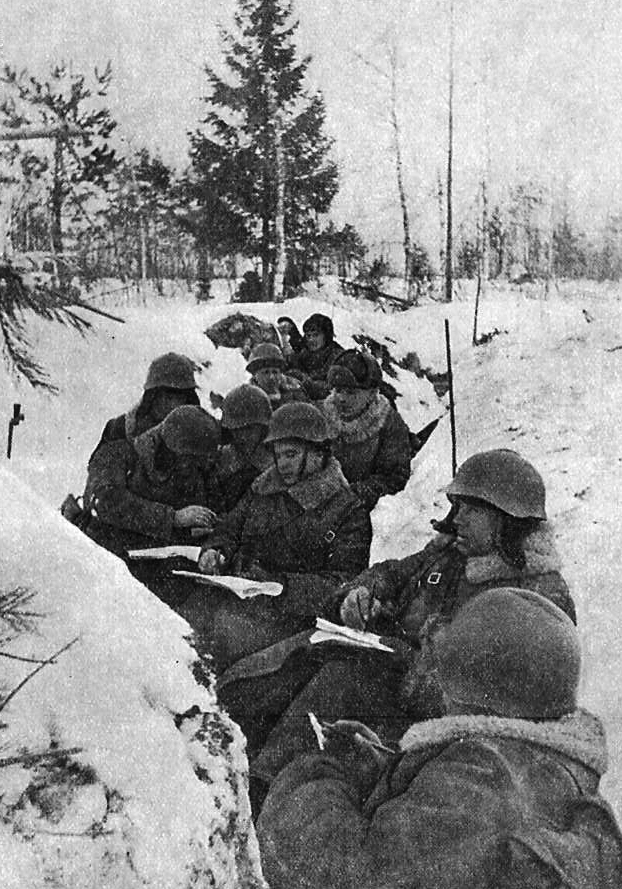
A Russian trenchline south of the town of Terrace, circa January of 1943. During the course of 1943, Terrace would become known to soldiers of both sides as a "Tiny Pittsburgh" for the vicious fighting in and near the settlement.

CLA soldiers operating an USV Divisional Field Gun against Union forces during the Battle of the Bell Irving River on February 10th, 1943. That battle would be fought on the banks of the Bell Irving between the elements of the 10th Canadian Rifle Division and the Union 112th Light Infantry Division. The Canadians would win that battle, inflicting heavy losses on the Union troops.

Union Army soldiers of the 21st Infantry Division in a trenchline near Kitselas.
In the spring of 1943, the situation would change dramatically for both sides. On April 4th, 1943, the Japanese would officially change sides in the conflict and would begin attacking the various British, Australian, and Russian territories and colonies throughout Asia and the Pacific. The Russian High Command as a response to this would order 12 of the 16 Divisions that were going to reinforce their forces in Alaska were instead rerouted to Manchuria and the Russian Far East to bolster their weak forces there against a possible Japanese Invasion from the Korean Peninsula. In addition, the High Command would also order the Russian Far East fleet who were in Vladivostok to set sail for Russian America. A force of a heavy cruiser and light cruiser and 6 destroyers would immediately depart from their home through the Sea of Japan to their destination of Unalyaska in the Aleutians. When they arrived in Unalyaska, the heavy cruiser Kerch was damaged from Japanese bombers, the light cruiser Admiral Grieg was sunk by Japanese bombs near the Kuril Islands, 2 destroyers sunk by Japanese airplanes, another one sunk by the USS Spearfish near Adak Island, and the remainder damaged.

A photo from a Russian destroyer during the infamous "Dash of the Far East Fleet" near the Kuril Islands, circa April 1943.

On April 30th, 1943, the USAF 9th Air Force would conduct the largest air raid on New Archangel yet in the conflict, 350 bombers would participate in the raid from bases near Whitehorse in the Yukon, and Vancouver in American Columbia. The targets were the port facilities, fuel farms, the naval base, and other strategic targets at New Archangel.

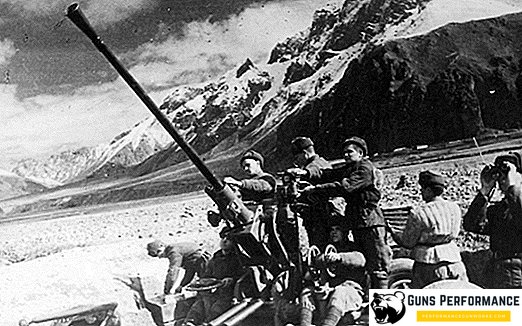
One of the many Russian AA guns defending New Archangel, circa 1942. During the raid, the Union forces would lose a total 61 B-17s, 5 P-38s, and 45 aircrew dead with many more planes damaged. Many to Russian fighters while the rest were shot down by the numerous AA guns in the area. In return, the Russians would suffer the loss of 18 fighters alongside many structures destroyed and damaged including many of the fuel drums at the fuel farm, which would result in New Archangel being rendered useless to the Russian Navy for 3 months.
By the start of July in 1943, the tables have begun to turn on the Russian led forces on the Alaskan Front. By that time, the Mormon Rebellion was defeated by the US Army, and so, several divisions would who were veterans of fighting the Mormon Insurrection would be redeployed to the Alaskan Front. Notable units would include the 10th Mountain Division, the 97th Infantry Division, and the 364th Independent Light Infantry Regiment. On July 15th, 1943, the Union Army would launch a new offensive in America Columbia which was aimed at driving the Radius Forces from American Columbia.

US Army troops firing an 81mm mortar at Russian positions near Dragon Lake.
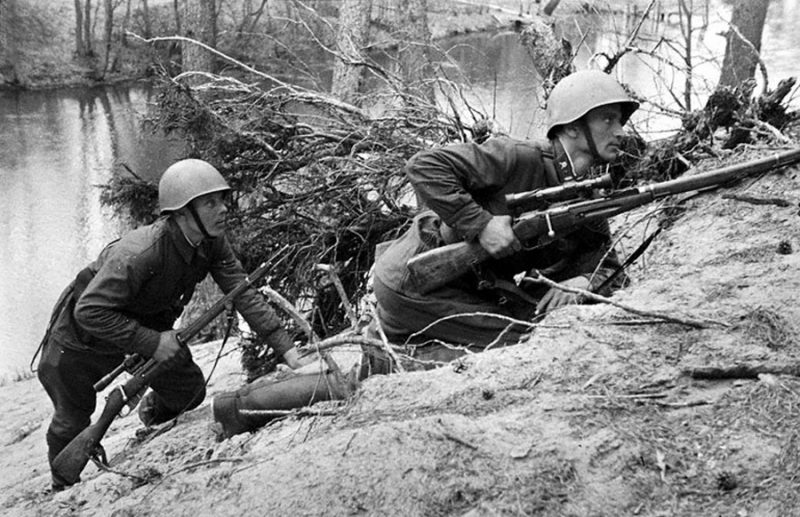
A Russian Sniper team during the fighting at Aiyansh.
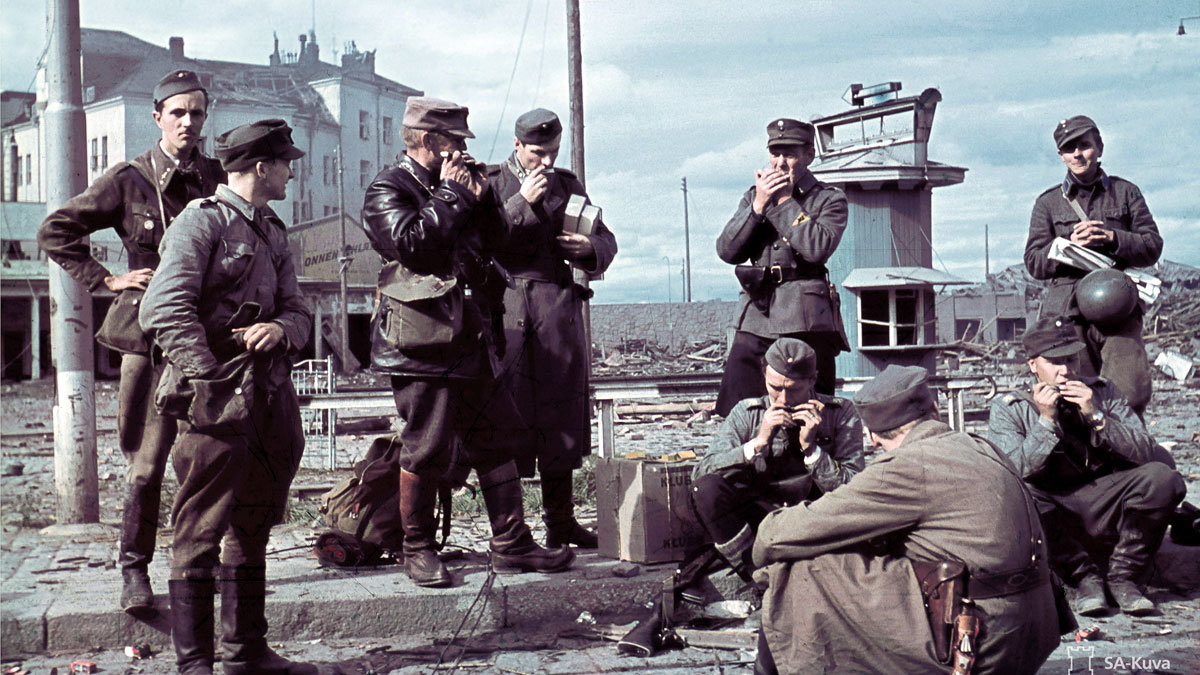
Union Soldiers in the bombed out ruins of the town of Terrace shortly after the surrender of the Radius forces there, circa September of 1943. After being cut off in August of 1943, the Russo-Canadian forces would fight against their numerically superior Union opponents until September 19th, 1943 when General Kuzma Galitsky surrendered the battered garrison to the Union troops under General Walter Krueger.

Canadian Liberation Army soldiers being evacuated from Metlakatla.
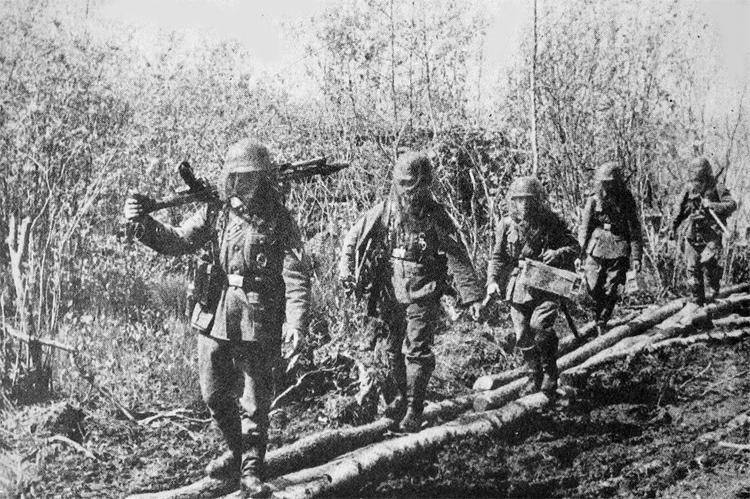
Union troops advancing down the Strohn River Valley, circa early October of 1943.

Behind the Frontlines however, the Canadian Rebels would continue to be a major problem for the Union Army in the region. In fact, these Rebels would continue to infest the region years after the end of the Second Great War, with the final cell being surrendering in 1959.
By November of 1943, the Union forces had managed to regain all of their pre-war territory from the Russians in American Columbia. They had even launched some amphibious landings on the Chirikov and Rivillagigedo Islands, thus securing a base for another planned offensive against the Russians. At this point, the Russians were still determined to defend their possessions for every last inch alongside the Canadian Liberation Army. They would also receive some new weapons such as the Tupolev Tu-2 bomber, the new Yak-9 fighters, and the latest models of the T-46 kegs and SU-76 Barrel Hunters.

Union Soldiers from the 14th Infantry Division engaged in a firefight with CLA forces near the banks of the Cranberry River, circa 1943.
The first half of 1943 on the Alaskan Front could easily be described as a stalemate, which much of the Nass River Valley as well as the Hoodoo and Sitkine Valleys were constantly changing hands between the Russian led forces and the Union Army. Meanwhile to the south, ferocious fighting had broken at the outskirts of the settlement of Terrace. At sea, the Union Naval Forces under Admiral Spruance were conduction an ever stepped up anti-shipping campaign in the Gulf of Alaska in order to cut off Russian Supply Lines to their forces in American Columbia. Union Submarines would also begin to lay sea mines outside of the ports of New Archangel, Novorossiysk, and Nikolayevskaya. In the air, the Union and the Russians would clash for dominance over the skies of Alaska and American Columbia along with the USAF coordinating with US Navy warplanes in a stepped up air campaign against the major ports, military installations, supply lines, railroad network, and communication centers in Russian America.

Men of the Canadian 3rd Light Infantry Brigade engaging Union forces in the Nass River Valley.

A Russian trenchline south of the town of Terrace, circa January of 1943. During the course of 1943, Terrace would become known to soldiers of both sides as a "Tiny Pittsburgh" for the vicious fighting in and near the settlement.

CLA soldiers operating an USV Divisional Field Gun against Union forces during the Battle of the Bell Irving River on February 10th, 1943. That battle would be fought on the banks of the Bell Irving between the elements of the 10th Canadian Rifle Division and the Union 112th Light Infantry Division. The Canadians would win that battle, inflicting heavy losses on the Union troops.

Union Army soldiers of the 21st Infantry Division in a trenchline near Kitselas.
In the spring of 1943, the situation would change dramatically for both sides. On April 4th, 1943, the Japanese would officially change sides in the conflict and would begin attacking the various British, Australian, and Russian territories and colonies throughout Asia and the Pacific. The Russian High Command as a response to this would order 12 of the 16 Divisions that were going to reinforce their forces in Alaska were instead rerouted to Manchuria and the Russian Far East to bolster their weak forces there against a possible Japanese Invasion from the Korean Peninsula. In addition, the High Command would also order the Russian Far East fleet who were in Vladivostok to set sail for Russian America. A force of a heavy cruiser and light cruiser and 6 destroyers would immediately depart from their home through the Sea of Japan to their destination of Unalyaska in the Aleutians. When they arrived in Unalyaska, the heavy cruiser Kerch was damaged from Japanese bombers, the light cruiser Admiral Grieg was sunk by Japanese bombs near the Kuril Islands, 2 destroyers sunk by Japanese airplanes, another one sunk by the USS Spearfish near Adak Island, and the remainder damaged.

A photo from a Russian destroyer during the infamous "Dash of the Far East Fleet" near the Kuril Islands, circa April 1943.

On April 30th, 1943, the USAF 9th Air Force would conduct the largest air raid on New Archangel yet in the conflict, 350 bombers would participate in the raid from bases near Whitehorse in the Yukon, and Vancouver in American Columbia. The targets were the port facilities, fuel farms, the naval base, and other strategic targets at New Archangel.

One of the many Russian AA guns defending New Archangel, circa 1942. During the raid, the Union forces would lose a total 61 B-17s, 5 P-38s, and 45 aircrew dead with many more planes damaged. Many to Russian fighters while the rest were shot down by the numerous AA guns in the area. In return, the Russians would suffer the loss of 18 fighters alongside many structures destroyed and damaged including many of the fuel drums at the fuel farm, which would result in New Archangel being rendered useless to the Russian Navy for 3 months.
By the start of July in 1943, the tables have begun to turn on the Russian led forces on the Alaskan Front. By that time, the Mormon Rebellion was defeated by the US Army, and so, several divisions would who were veterans of fighting the Mormon Insurrection would be redeployed to the Alaskan Front. Notable units would include the 10th Mountain Division, the 97th Infantry Division, and the 364th Independent Light Infantry Regiment. On July 15th, 1943, the Union Army would launch a new offensive in America Columbia which was aimed at driving the Radius Forces from American Columbia.
US Army troops firing an 81mm mortar at Russian positions near Dragon Lake.

A Russian Sniper team during the fighting at Aiyansh.

Union Soldiers in the bombed out ruins of the town of Terrace shortly after the surrender of the Radius forces there, circa September of 1943. After being cut off in August of 1943, the Russo-Canadian forces would fight against their numerically superior Union opponents until September 19th, 1943 when General Kuzma Galitsky surrendered the battered garrison to the Union troops under General Walter Krueger.
Canadian Liberation Army soldiers being evacuated from Metlakatla.

Union troops advancing down the Strohn River Valley, circa early October of 1943.

Behind the Frontlines however, the Canadian Rebels would continue to be a major problem for the Union Army in the region. In fact, these Rebels would continue to infest the region years after the end of the Second Great War, with the final cell being surrendering in 1959.
By November of 1943, the Union forces had managed to regain all of their pre-war territory from the Russians in American Columbia. They had even launched some amphibious landings on the Chirikov and Rivillagigedo Islands, thus securing a base for another planned offensive against the Russians. At this point, the Russians were still determined to defend their possessions for every last inch alongside the Canadian Liberation Army. They would also receive some new weapons such as the Tupolev Tu-2 bomber, the new Yak-9 fighters, and the latest models of the T-46 kegs and SU-76 Barrel Hunters.
Last edited:

a US serviceman giving a tour of a former Confederate 240mm Howitzer position outside Washington DC, 2008. While the CSA had never managed to match the USA in terms of heavy firepower, they were not entirely without such heavy pieces, and guns such as these had pounded US positions in the early part of the Second Great War as part of the opening stages of Operation Blackbeard, several more showing up during operation Coalscuttle and hitting the US during the battle of Pittsburgh.
After that, however, the CSA's constant status of retreat meant the cumbersome guns often had to be abandoned, and the piece outside DC was one of the few not blown up by its crew.
Internment Camps in the U.S.A. and C.S.A.
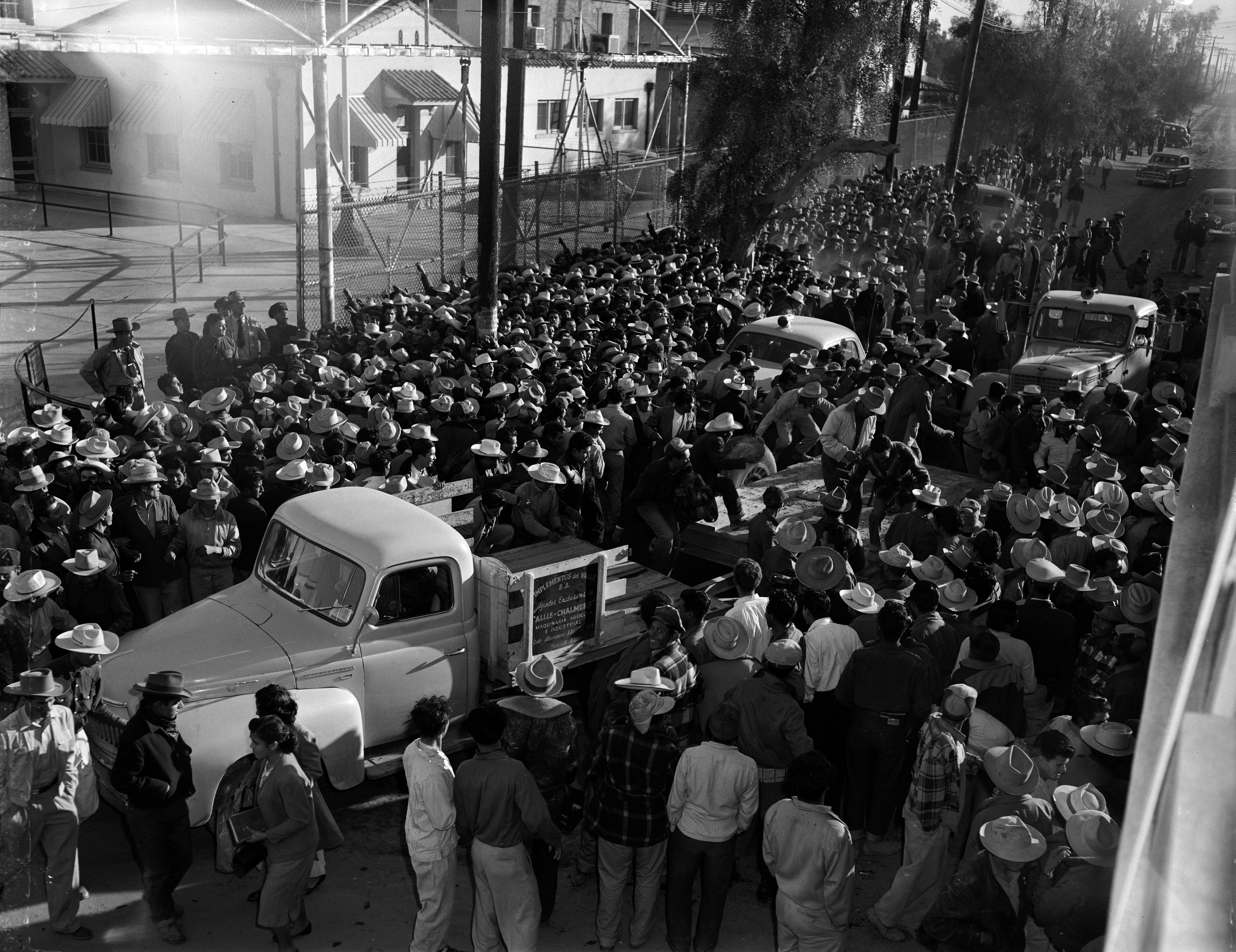
An Internment Camp filled with Mexican Nationals and Mexican Americans in Manzanar, near Independence, California, ca. 1941
Now considered an embarrassment in American history during the Second Great War, Mexico and the United States were technically enemies, but neither side sent troops to fight against each other, with the exception of Confederate-sponsored regiments that Featherston demanded from the Mexican government to fight against Union troops, under pain of economic threat to its stability. President Smith authorized an executive order to round up as many Mexican-descent individuals living in the United States out of fear of espionage activities. The camps were mostly located in the American Southwest, where there was a sizable Mexican-American community. After the death of Smith, La Follette reversed the executive order under the condition that those who joined the United States Army or worked for the war effort could be freed. President La Follette also announced to Mexican Nationals living in the C.S.A. to join up against the Freedomites, in exchange for citizenship.
Despite the fact that other enemy aliens were also interred, such as British, French, and Russian nationals and first-generation Americans with the same heritage throughout the country, the internment camps quickly gained a sour reputation after the war when it was compared to that of the camps that the Freedomites used against Blacks. To some extent, the federal and state governments have acknowledged the unconstitutionality of the executive order and the realization that no evidence existed of alleged espionage by Mexican Americans or Mexican Nationals. However, there exists circumstantial evidence for Canadians and British espionage.

Anti-German Propaganda poster made by the Confederacy, used during the First and Second Great War
Although never fighting directly against each other, the Confederacy was responsible for developing Anti-German hysteria in North America. The poster in question is that of a Confederate Hand grabbing a German Dachshund and expressing displeasure at the breed. It was noted by historians that Confederates would often destroy anything that was German-related, including the euthanizing of German dogs, such as Dachshunds, German Shepherds, Dobermanns, and Schnauzers.
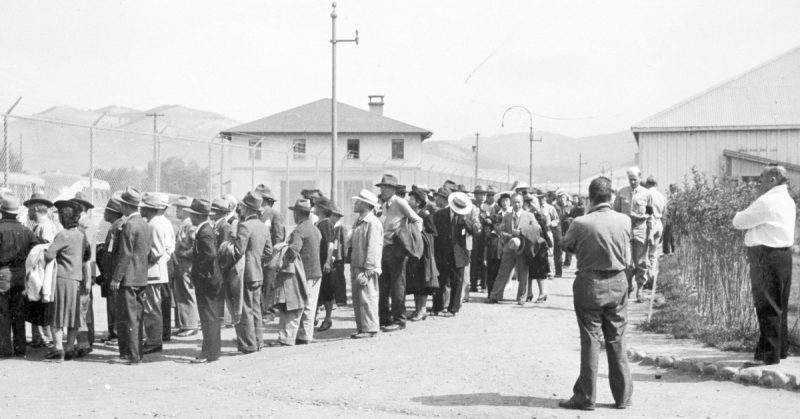
Photograph of German-Confederates at an internment camp somewhere in Sonora, ca. 1942
Besides Blacks and non-Freedomite supporters, the Confederacy did force most of the German-Confederate community to move out toward camps in order to prevent them from becoming allies with the Union. Similar to the concentration camps that contained Blacks, Union soldiers would sometimes find several camps that contained imprisoned German nationals or German-Confederates and liberated them.

Photograph of Canadian rebels and British P.O.W.'s somewhere in New Brunswick at an internment camp, ca. 1943
Most of the British population were from the Battle of Greenland or British nationals living in the United States. Those who belonged in the Canadian Liberation Army were often sent to these camps if they were not automatically executed.

Anti-British Propaganda poster featuring a German soldier (right) and a Union soldier (left) fighting against John Bull, the personification of Britain
Sources:
1)
2)
3) https://www.warhistoryonline.com/instant-articles/internment-of-germans.html
4) https://en.wikipedia.org/wiki/Ilag
5) https://franzoesischer-kriegsgefang...rate-à-la-ferme/stalags-und-arbeitskommandos/
6) https://en.wikipedia.org/wiki/Internment_of_German_Americans
7) https://en.wikipedia.org/wiki/Bracero_program
Bonus: https://allthatsinteresting.com/german-americans-internment

An Internment Camp filled with Mexican Nationals and Mexican Americans in Manzanar, near Independence, California, ca. 1941
Now considered an embarrassment in American history during the Second Great War, Mexico and the United States were technically enemies, but neither side sent troops to fight against each other, with the exception of Confederate-sponsored regiments that Featherston demanded from the Mexican government to fight against Union troops, under pain of economic threat to its stability. President Smith authorized an executive order to round up as many Mexican-descent individuals living in the United States out of fear of espionage activities. The camps were mostly located in the American Southwest, where there was a sizable Mexican-American community. After the death of Smith, La Follette reversed the executive order under the condition that those who joined the United States Army or worked for the war effort could be freed. President La Follette also announced to Mexican Nationals living in the C.S.A. to join up against the Freedomites, in exchange for citizenship.
Despite the fact that other enemy aliens were also interred, such as British, French, and Russian nationals and first-generation Americans with the same heritage throughout the country, the internment camps quickly gained a sour reputation after the war when it was compared to that of the camps that the Freedomites used against Blacks. To some extent, the federal and state governments have acknowledged the unconstitutionality of the executive order and the realization that no evidence existed of alleged espionage by Mexican Americans or Mexican Nationals. However, there exists circumstantial evidence for Canadians and British espionage.
Anti-German Propaganda poster made by the Confederacy, used during the First and Second Great War
Although never fighting directly against each other, the Confederacy was responsible for developing Anti-German hysteria in North America. The poster in question is that of a Confederate Hand grabbing a German Dachshund and expressing displeasure at the breed. It was noted by historians that Confederates would often destroy anything that was German-related, including the euthanizing of German dogs, such as Dachshunds, German Shepherds, Dobermanns, and Schnauzers.

Photograph of German-Confederates at an internment camp somewhere in Sonora, ca. 1942
Besides Blacks and non-Freedomite supporters, the Confederacy did force most of the German-Confederate community to move out toward camps in order to prevent them from becoming allies with the Union. Similar to the concentration camps that contained Blacks, Union soldiers would sometimes find several camps that contained imprisoned German nationals or German-Confederates and liberated them.

Photograph of Canadian rebels and British P.O.W.'s somewhere in New Brunswick at an internment camp, ca. 1943
Most of the British population were from the Battle of Greenland or British nationals living in the United States. Those who belonged in the Canadian Liberation Army were often sent to these camps if they were not automatically executed.
Anti-British Propaganda poster featuring a German soldier (right) and a Union soldier (left) fighting against John Bull, the personification of Britain
Sources:
1)
4) https://en.wikipedia.org/wiki/Ilag
5) https://franzoesischer-kriegsgefang...rate-à-la-ferme/stalags-und-arbeitskommandos/
6) https://en.wikipedia.org/wiki/Internment_of_German_Americans
7) https://en.wikipedia.org/wiki/Bracero_program
Bonus: https://allthatsinteresting.com/german-americans-internment
Last edited:
A few medals from the CSA

The Medal of Freedom, which was the highest medal for civilians in Featherston's Confederacy. These were usually awarded to civilians who had distinguished themselves within the CSA (mostly Members of the Freedom Party.)

Order of Lee - First awarded during the Second Mexican War and until the SGW, was always awarded during times of war. The Order of Lee was the second highest medal for the Confederate Armed Forces after the Medal of Honor. At times, the medal was awarded multiple times to a single, such as this example here which is shown to have awarded twice to one man with the single star. Originally, the medal was only awarded to Generals and Officers, but in 1941 under Featherston's orders, it was also awarded to enlisted men for bravery in the field of battle. This medal was also awarded to foreign soldiers (usually Generals and Admirals) for propaganda purposes, notably to Generals Huntziger (France), Foch (France), Wavell (Britain), Montgomery (Britain), Dovator (Russia), and Admiral Beatty (Britain).

Service Star - First Created in 1863 in recognition of soldiers who had fought on the battlefield during the War of Secession, the Service Star was one of the more common awards for the Confederate Army. This award is broken down to three different variants, which includes:
Bronze Star - 15 Engagements
Silver Star - 45 Engagements
Gold Star - 100 Engagements
The Medal of Freedom, which was the highest medal for civilians in Featherston's Confederacy. These were usually awarded to civilians who had distinguished themselves within the CSA (mostly Members of the Freedom Party.)
Order of Lee - First awarded during the Second Mexican War and until the SGW, was always awarded during times of war. The Order of Lee was the second highest medal for the Confederate Armed Forces after the Medal of Honor. At times, the medal was awarded multiple times to a single, such as this example here which is shown to have awarded twice to one man with the single star. Originally, the medal was only awarded to Generals and Officers, but in 1941 under Featherston's orders, it was also awarded to enlisted men for bravery in the field of battle. This medal was also awarded to foreign soldiers (usually Generals and Admirals) for propaganda purposes, notably to Generals Huntziger (France), Foch (France), Wavell (Britain), Montgomery (Britain), Dovator (Russia), and Admiral Beatty (Britain).
Service Star - First Created in 1863 in recognition of soldiers who had fought on the battlefield during the War of Secession, the Service Star was one of the more common awards for the Confederate Army. This award is broken down to three different variants, which includes:
Bronze Star - 15 Engagements
Silver Star - 45 Engagements
Gold Star - 100 Engagements
Faces of the Unionized South
Although the Devastation gets more scholarly attention when studying the Demographics of the former Confederacy, research has revealed that the White Male population was drastically reduced, including underaged Confederates and retired-age Confederates. Featherston's refusal to surrender compelled him to get as many Whites from all walks of life to fight against the U.S. Army to the last drop of blood in its defense. Sometimes, the soldiers were young adolescents who were included among the war dead due to battle casualities or war crimes (see Boris Lavochkin). By the end of the war, most of the White males left in the Confederacy were either infants, children, and elders.
The gap in population allowed American citizens to settle down in the newly annexed C.S.A., where Yankee men often intermarried with Confederate women. The U.S. government encouraged immigration to both the conquered Confederacy and Canada from any nation on Earth who promised loyalty to the U.S.A. and the will to work and live a decent life. Notwithstanding the controversy of immigration problems that are brought up in American politics, the former Confederate States would eventually develop into one of the most multicultural and multiracial regions in the United States.
Here are some examples of individuals who were born and raised in what would be the Confederacy, but are not descendent from Black or White Confederate Ancestry.
Chinese Americans with Confederate Heritage
Chinese Texan
Mexican American descendent from Mexican Confederates
Although the Devastation gets more scholarly attention when studying the Demographics of the former Confederacy, research has revealed that the White Male population was drastically reduced, including underaged Confederates and retired-age Confederates. Featherston's refusal to surrender compelled him to get as many Whites from all walks of life to fight against the U.S. Army to the last drop of blood in its defense. Sometimes, the soldiers were young adolescents who were included among the war dead due to battle casualities or war crimes (see Boris Lavochkin). By the end of the war, most of the White males left in the Confederacy were either infants, children, and elders.
The gap in population allowed American citizens to settle down in the newly annexed C.S.A., where Yankee men often intermarried with Confederate women. The U.S. government encouraged immigration to both the conquered Confederacy and Canada from any nation on Earth who promised loyalty to the U.S.A. and the will to work and live a decent life. Notwithstanding the controversy of immigration problems that are brought up in American politics, the former Confederate States would eventually develop into one of the most multicultural and multiracial regions in the United States.
Here are some examples of individuals who were born and raised in what would be the Confederacy, but are not descendent from Black or White Confederate Ancestry.
Last edited:
Admittedly I have thought that a lot of Central and Eastern Europeans would move into the former Confederacy following SGW.
The Forgotten Campaign: The True Story of the Alaskan Front during the SGW Part 10
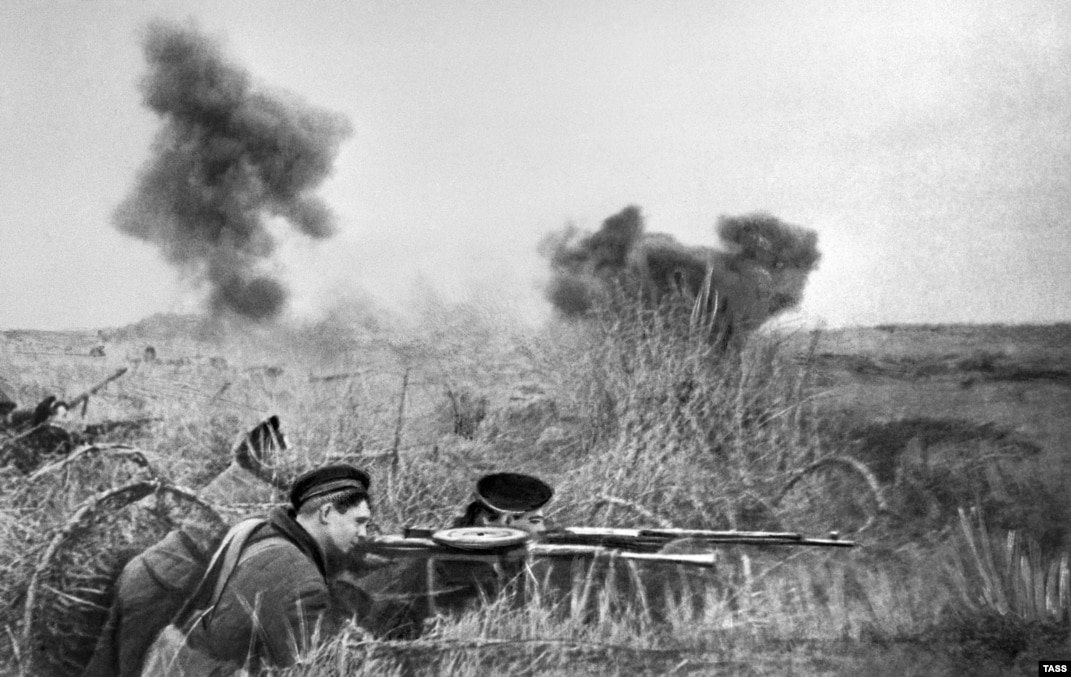
Imperial Russian Navy sailors during the Battle of New Archangel, circa 1944.
At the start of 1944, both sides on the Alaskan Front were building up their forces for the spring of 1944. The Yankees under General Devers were building up their forces for an offensive in the region which they had codenamed Operation: Watch Tower, which was to attack the enemy positions from the southern tip of Alaska to Dawson City along the banks of the Yukon River. They were also preparing for a few amphibious landings against Russian positions from Baranof Island to Kadyak Island as well as few potential landings against the Aleutians which they had coordinated with the Japanese Navy. On the Russian side of things, General Antonov and his forces has a large area to defend, from the south-eastern panhandle of Alaska to their holdings in the Yukon, to the vast coastline with the Northern Pacific to the Aleutian Islands.

Operation Watch Tower would commence on April 1st, 1944 when many Union division would simultaneously launch their attacks on Russians from the southern tip of mainland Alaska to the Yukon River.

One that same day, the Union 5th Marine Division would launch their part of the offensive called Operation Seal, which they had landed on the Kruzof and Baranof Islands with the objective of capturing the port city of New Archangel, the capital of Russian America. Despite the air superiority and the naval support, the Marines would suffer huge casualties on H-Day and would take them days to secure the beach heads. Afterwards, the Union Marines with their naval gunfire and air support would fight against the entrenched Russian forces until on April 14th, would finally encircle New Archangel, thus placing the city under siege (though the Russian High Command and the Government for Russia had fled the scene to Nikolayevskaya some time before April 1st.)

Russian sailors being briefed about their station sometime before H-Day, circa 1944. During the Battle of New Archangel, a majority of the defenders were either the Imperial Marines or disembarked Russian Navy sailors. The others would either be armed civilian militias, penal troops, regular army forces, token amount of Canadian Liberation Army troops, and the local territorial troops which were indigenous first nations people, which in total amounted to 6,100 soldiers.
By April 20th, the Union Army had managed to seize the port city of Novorossiysk, thus cutting the Russian forces in the southern panhandle off from the rest of Alaska. By that time, the fighting in the city of New Archangel was proving to be immense as the Russians there, as well in the other parts of the front, were determined to fight for every inch, among them were the Cossack troops from Alyaskan Host.

Two Russian Cossack soldiers near the settlement of Volkova along the Tanana River shortly before the Battle of Volkova, circa 1944. The Cossacks, who had been in Alaska since the mid 1800s, had been in the Yukon for much of the war. But when the Union Army launched their spring offensive, the Cossack would see heavy action, often using their cavalry tactics against their enemies. In one particular battle at the hamlet of Volkova on April 25th, the Cossacks had covered the retreat of the remnants of the CLA's 4th Light Rifle Division by launching a mass cavalry charge against the elements of the Yankee 97th Light Infantry Division, causing mass death and confusion among the Union troops.
A Union soldier firing at Russian troops during a firefight at Serebryanyye Pruzhiny* with a captured SVT-40, circa April 29th. During the course of the Alaskan Front, many SVT-40, AVS-36, and Fedorov Rifles would fall into Union hands, and the Union troops would press them into service against their former owners much they had done with the Tredegar Automatic Rifles against the Confederates.
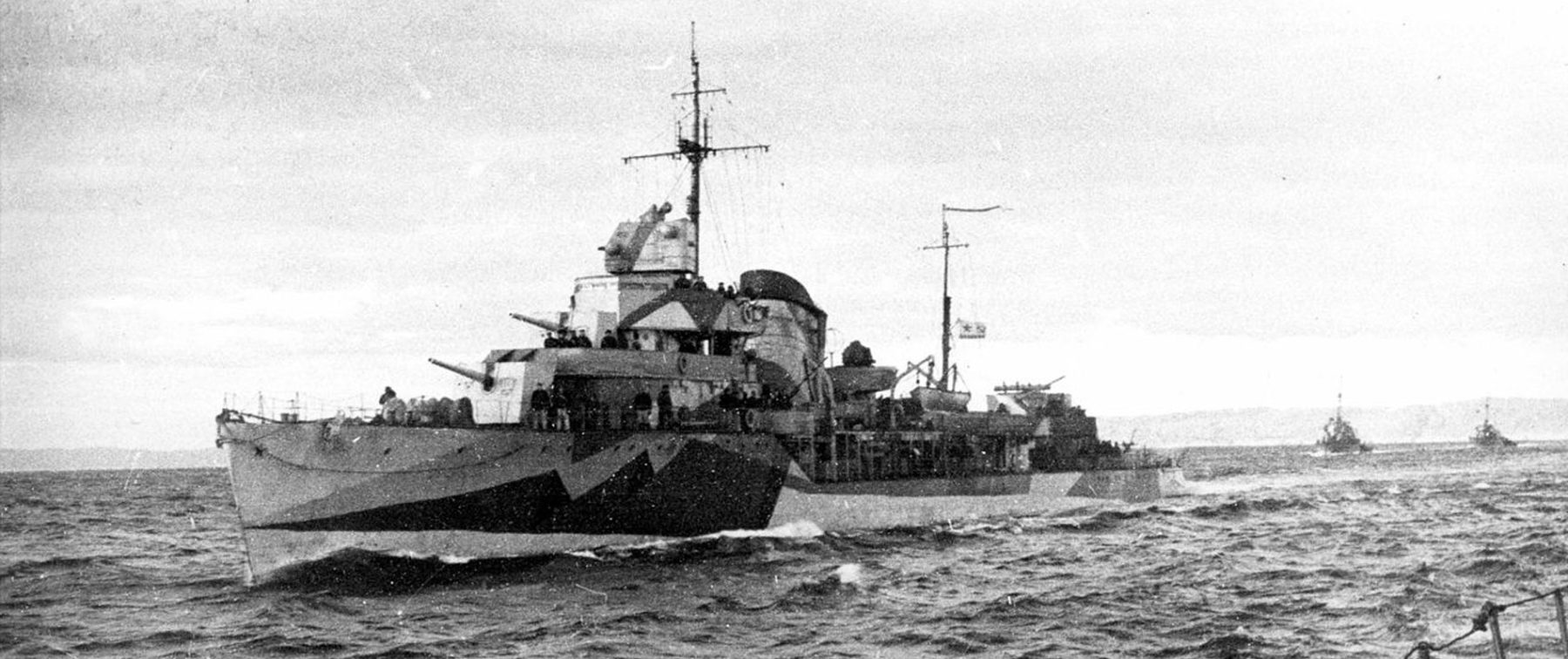
At sea, the last naval battle in the Pacific of the SGW was fought, on April 27th, a small flotilla consisting of the light cruiser Oleg and four destroyers would make an attempt to attack the Union supply base at Novorossiysk to disrupt Union supply lines there. Near the Yukatat Bay, the Russian flotilla would encounter the stronger Union forces which consisted of the heavy cruiser Salt Lake City and six destroyers. In that engagement, the Russians would lose two destroyers and another damaged with the Union forces suffering the loss of the destroyer USS Hart and three more damaged.
By May 4th, 1944, the Union offensive was largely successful, in which they had managed to conquer most of the southern panhandle of Alaska, most of the Yukon during the Russian counter-offensive in late 1941, and parts of Western Alaska. In spite of their success, the Union forces would suffer heavy casualties in the form of 7,000 men dead, 9,564 wounded, 100 missing, 7 barrels, 14 vehicles, and 32 aircraft destroyed. On that same day, the Russians would surrender on the European Front and General Antonov would ask for a cease fire with the Union forces. General Devers in response would accept Antonov's offer for a cease fire and starting on May 5th, would begin peace talks at the Union controlled city of Shelekovburg**. The Russian envoys were General Kirill Meretskov, Admiral Vitaly Fokin, and Aleksandr Kosygin, the Governor General of Russian America, while the Union envoys were Generals Walter Kreuger, Johnathan Wainright, and Jacob Devers himself. The negotiations would last until May 9th when as armistice was formalized, which would remain in effect until the signing of the Treaty of Hiroshima*** on September 2nd, 1945, which the treaty had dictated that all Union Troops in Alaska as well as the remaining Russian ones in Yukon were to withdraw from each others territory. (As an interesting side note, the Union side of the negotiations for the Treaty of Hiroshima had demanded that the Russians turn over all Canadian Liberation Army soldiers and Canadian Nationals in Russian custody to them. But the Russians would never agree to the Union demands, and it would all slide with the signing of the treaty. These Canadians would go on to form the Canadian-Alaskan (or Al-Can) Community in Russia.) This conflict between Russia and the United States as well as the Siberian War and the subsequent Treaty of Hiroshima would ultimately lead to the formation of the Tsardom of Alaska in 1948 following Tsar Mikhail II abdication in Russia by General Zhukov.
Final Loss Count for the Alaskan Front during the SGW (10/15/1941-5/9/1944.)

Imperial Russian Navy sailors during the Battle of New Archangel, circa 1944.
At the start of 1944, both sides on the Alaskan Front were building up their forces for the spring of 1944. The Yankees under General Devers were building up their forces for an offensive in the region which they had codenamed Operation: Watch Tower, which was to attack the enemy positions from the southern tip of Alaska to Dawson City along the banks of the Yukon River. They were also preparing for a few amphibious landings against Russian positions from Baranof Island to Kadyak Island as well as few potential landings against the Aleutians which they had coordinated with the Japanese Navy. On the Russian side of things, General Antonov and his forces has a large area to defend, from the south-eastern panhandle of Alaska to their holdings in the Yukon, to the vast coastline with the Northern Pacific to the Aleutian Islands.

Operation Watch Tower would commence on April 1st, 1944 when many Union division would simultaneously launch their attacks on Russians from the southern tip of mainland Alaska to the Yukon River.

One that same day, the Union 5th Marine Division would launch their part of the offensive called Operation Seal, which they had landed on the Kruzof and Baranof Islands with the objective of capturing the port city of New Archangel, the capital of Russian America. Despite the air superiority and the naval support, the Marines would suffer huge casualties on H-Day and would take them days to secure the beach heads. Afterwards, the Union Marines with their naval gunfire and air support would fight against the entrenched Russian forces until on April 14th, would finally encircle New Archangel, thus placing the city under siege (though the Russian High Command and the Government for Russia had fled the scene to Nikolayevskaya some time before April 1st.)

Russian sailors being briefed about their station sometime before H-Day, circa 1944. During the Battle of New Archangel, a majority of the defenders were either the Imperial Marines or disembarked Russian Navy sailors. The others would either be armed civilian militias, penal troops, regular army forces, token amount of Canadian Liberation Army troops, and the local territorial troops which were indigenous first nations people, which in total amounted to 6,100 soldiers.
By April 20th, the Union Army had managed to seize the port city of Novorossiysk, thus cutting the Russian forces in the southern panhandle off from the rest of Alaska. By that time, the fighting in the city of New Archangel was proving to be immense as the Russians there, as well in the other parts of the front, were determined to fight for every inch, among them were the Cossack troops from Alyaskan Host.

Two Russian Cossack soldiers near the settlement of Volkova along the Tanana River shortly before the Battle of Volkova, circa 1944. The Cossacks, who had been in Alaska since the mid 1800s, had been in the Yukon for much of the war. But when the Union Army launched their spring offensive, the Cossack would see heavy action, often using their cavalry tactics against their enemies. In one particular battle at the hamlet of Volkova on April 25th, the Cossacks had covered the retreat of the remnants of the CLA's 4th Light Rifle Division by launching a mass cavalry charge against the elements of the Yankee 97th Light Infantry Division, causing mass death and confusion among the Union troops.

A Union soldier firing at Russian troops during a firefight at Serebryanyye Pruzhiny* with a captured SVT-40, circa April 29th. During the course of the Alaskan Front, many SVT-40, AVS-36, and Fedorov Rifles would fall into Union hands, and the Union troops would press them into service against their former owners much they had done with the Tredegar Automatic Rifles against the Confederates.

At sea, the last naval battle in the Pacific of the SGW was fought, on April 27th, a small flotilla consisting of the light cruiser Oleg and four destroyers would make an attempt to attack the Union supply base at Novorossiysk to disrupt Union supply lines there. Near the Yukatat Bay, the Russian flotilla would encounter the stronger Union forces which consisted of the heavy cruiser Salt Lake City and six destroyers. In that engagement, the Russians would lose two destroyers and another damaged with the Union forces suffering the loss of the destroyer USS Hart and three more damaged.
By May 4th, 1944, the Union offensive was largely successful, in which they had managed to conquer most of the southern panhandle of Alaska, most of the Yukon during the Russian counter-offensive in late 1941, and parts of Western Alaska. In spite of their success, the Union forces would suffer heavy casualties in the form of 7,000 men dead, 9,564 wounded, 100 missing, 7 barrels, 14 vehicles, and 32 aircraft destroyed. On that same day, the Russians would surrender on the European Front and General Antonov would ask for a cease fire with the Union forces. General Devers in response would accept Antonov's offer for a cease fire and starting on May 5th, would begin peace talks at the Union controlled city of Shelekovburg**. The Russian envoys were General Kirill Meretskov, Admiral Vitaly Fokin, and Aleksandr Kosygin, the Governor General of Russian America, while the Union envoys were Generals Walter Kreuger, Johnathan Wainright, and Jacob Devers himself. The negotiations would last until May 9th when as armistice was formalized, which would remain in effect until the signing of the Treaty of Hiroshima*** on September 2nd, 1945, which the treaty had dictated that all Union Troops in Alaska as well as the remaining Russian ones in Yukon were to withdraw from each others territory. (As an interesting side note, the Union side of the negotiations for the Treaty of Hiroshima had demanded that the Russians turn over all Canadian Liberation Army soldiers and Canadian Nationals in Russian custody to them. But the Russians would never agree to the Union demands, and it would all slide with the signing of the treaty. These Canadians would go on to form the Canadian-Alaskan (or Al-Can) Community in Russia.) This conflict between Russia and the United States as well as the Siberian War and the subsequent Treaty of Hiroshima would ultimately lead to the formation of the Tsardom of Alaska in 1948 following Tsar Mikhail II abdication in Russia by General Zhukov.
Final Loss Count for the Alaskan Front during the SGW (10/15/1941-5/9/1944.)
| Nation | KIA | WIA | POW/MIA | Artillery Lost | Vehicle Losses | Aircraft Losses | Ship Losses |
|---|---|---|---|---|---|---|---|
| USA | 81,000 | 156,000 | 24,000/2,567 | 975 Guns | 397 Vehicles | 513 Aircraft | 35 Warships, 540,000 GRT of Shipping, and 21 Submarines. |
| Russia | 94,000 | 143,00 | 42,000/3,400 | 1,200 Guns | 365 Vehicles | 467 Aircraft | 22 Warships, 495,000 GRT of Shipping, and 16 Submarines |
| Japan (Until 1943) | 5,000 | 11,000 | 324/654 | 94 Guns | 7 Vehicles | 83 Aircraft | 10 Warships and 143,000 GRT of Shipping |
| Canadian Liberation Army | 21,000 | 24,000 | 10,000/5,000 | 106 Guns | 33 Vehicles | 21 Aircraft | N/A |
| Canadian Partisans | 4,000-7,500 | 950-4,100 | 55 POW | N/A | N/A | N/A | N/A |
-----------------------------------------------------------------------------------------------------------------------------------------------------------------
* = Silver Springs
** = OTL Location of Juneau, Alaska
*** = Treaty of Hiroshima was the treaty that had ended Siberian War that was waged between the Russians and the Japanese which has started in 1943 following Japan switching sides.
* = Silver Springs
** = OTL Location of Juneau, Alaska
*** = Treaty of Hiroshima was the treaty that had ended Siberian War that was waged between the Russians and the Japanese which has started in 1943 following Japan switching sides.
Last edited:
Ummmm, Depends...I could see them prefering the more urbanize Old Union and people of more rural areas(some of Centra and Eastern but the remainder Mexicans in CSA plus Asian inmmigrants) could be a new core in the now open and more empty(thanks featherstone) southAdmittedly I have thought that a lot of Central and Eastern Europeans would move into the former Confederacy following SGW.
Admittedly I have thought that a lot of Central and Eastern Europeans would move into the former Confederacy following SGW.
That’s very possible, although I tend to imagine most of them migrating toward the OTL Midwestern and Northeastern states. Perhaps a significant Central/Eastern European culture develops in the areas of New Brunswick, Nova Scotia, and Newfoundland.
I was just able to find actual Chinese Southerners that stood out from the rest the population and incorporate them with a unique story into the TL-191 Universe.
For how I imagine TL-191 American demographics right now, I see the former Canadian Pacific region, along with the states of Washington, Oregon, parts of California, (maybe Hawaii?) to have a significant Asian-American population, mostly from China and other similar regions trying to escape Japanese dominance. The former Confederacy has a significantly larger population of Mexican-descendent people.
One of my head canons is that the U.S. government tries to get as many immigrants as they can as part of the “Defreedomitization” into the Southern states, which varying degrees of success. It may get really awkward to try to convince people living in the former African colonies-now-newly-formed-nations to come to the former Confederacy, but I see it eventually happening, with full government support and protection.
Last edited:
I'd imagine that the US considering their long held status as enemies with Mexico would be highly against Mexican migration into US territory. Now any South American countries that have been long term allies of the US I can see happening. Though I can see plenty of immigration from Eastern Asia into the US in the old CS regions. Alongside land grants for Union soldiers that the US would try to encourage moving southward to much mixed success.
I'd also say Utah would be a particularly heavily migrated too region following the expulsion of Mormons to the Hawaiian islands.
On the other hand considering that the Confederacy was an internationally recognized independent country that had fought over four wars with the US in the span of 80 years. I think the place might go full on Balkans by the end of the century.
I'd also say Utah would be a particularly heavily migrated too region following the expulsion of Mormons to the Hawaiian islands.
On the other hand considering that the Confederacy was an internationally recognized independent country that had fought over four wars with the US in the span of 80 years. I think the place might go full on Balkans by the end of the century.
50th Anniversary Commemoration of the Fourth Pacific War:

Artist’s rendition of an immediate prewar Imperial Japanese Army soldier.

Russian soldiers engage the Japanese in Manchukuo, July 1968.

US bomber over Tokyo, sometime in 1968.

US soldiers, armed with M1955A1 rifles, parade through liberated Seoul, September 1968.

Vietnamese forces rest outside the former Japanese consulate building in Saigon after its capture, September 1969.
Artist’s rendition of an immediate prewar Imperial Japanese Army soldier.
Russian soldiers engage the Japanese in Manchukuo, July 1968.
US bomber over Tokyo, sometime in 1968.
US soldiers, armed with M1955A1 rifles, parade through liberated Seoul, September 1968.
Vietnamese forces rest outside the former Japanese consulate building in Saigon after its capture, September 1969.
Last edited:
If it did it would make Britain and the U.S. even more distrustful of each other.Was there a Titanic (type) disaster in TL- 191 circa 1912 ?View attachment 575411
MaxGerke01
Banned
Thats true but if ittl it was still a British ship is there a chance it would have been headed to a Confederate port with mostly British and Confederate passengers and only a handful of Americans?If it did it would make Britain and the U.S. even more distrustful of each other.
Also suppose it was a German ship headed to New York which would be the analogous situation ittl in terms of political and cultural alliances....
I think that in peacetime trade, commerce, and travel would remain normal regardless of geopolitics. I remember Anne Colleton recollecting in one chapter from TGW how she would order fur coats from New York prewar.Thats true but if ittl it was still a British ship is there a chance it would have been headed to a Confederate port with mostly British and Confederate passengers and only a handful of Americans?
Also suppose it was a German ship headed to New York which would be the analogous situation ittl in terms of political and cultural alliances....
Share:
